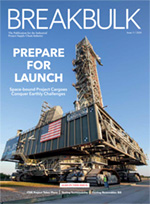Sep 11 | 2020
Room for Improvement in Onshore Wind Farm Safety
 By David Collett
By David CollettGood project safety is a team game and the best performing industries – and their leading companies – agree upon broad common standards underpinned by effective communication and engagement with their supply chains. That is well accepted.
But unfortunately, in today’s wind industry, this is not always the case. As a result, we are seeing far too many accidents and near-misses, especially during transportation and construction of turbines for onshore wind farms.
As if to underline the point, one project last year reported nine – yes, nine – serious incidents within days of each other.
In some ways, the problems – while not excusable – are understandable. The very nature of the onshore industry means that wind farms are located in isolated and inaccessible locations, while the turbines themselves are becoming bigger and heavier as the technology develops.
Of course, the relevant health and safety authorities will deal with individual incidents. But to attribute blame (or not) after an incident is not my point. We need to change the way we work.
To make the necessary step change in safety culture the whole wind industry needs to come together and agree upon standards and practices that will not only improve safety – and potentially save lives – but will also make the industry more efficient.
For, to be clear, safety and efficiency are inextricably linked – they are two sides of the same coin. In short, if a job is run efficiently, properly planned and well executed, then it will be safer.
Best Practice Guidance
To progress this debate, ESTA recently published a new best practice guide with the backing of many leading turbine and crane manufacturers. In essence, we are trying to highlight the risks of poor planning, and stress the importance of early engagement of all of the firms working on a project.
Our work identified common characteristics in many accidents – cranes collapsing due to poor weather or ground conditions, or vehicles turning over due to poor quality access roads and badly planned site infrastructure.
The simple conclusion is that good safety has to be factored into the management and pricing of a project from the beginning with the active involvement of all those involved.
To give one example, the guide shows how involving transport and crane companies in the planning of the site layout on a wind farm can greatly improve efficiency by making access and construction quicker and safer. Yet too often, the transport and crane firms are not consulted until too late in the process.
The worrying truth is that the wind industry has some way to go before everyone in it is seen to be taking site safety as seriously as other sectors. We hope that will soon change. Only by working together with a clear understanding of the risks and how best to manage them can we create a more efficient and safer industry for the benefit of everyone.
To download a free copy of the Best Practice Guide for Transport and Installation of Onshore WTG Systems, go to www.estaeurope.eu.
David Collett is president of ESTA, the European Association of Abnormal Road Transport and Mobile Cranes, and managing director of the Collett Group.
